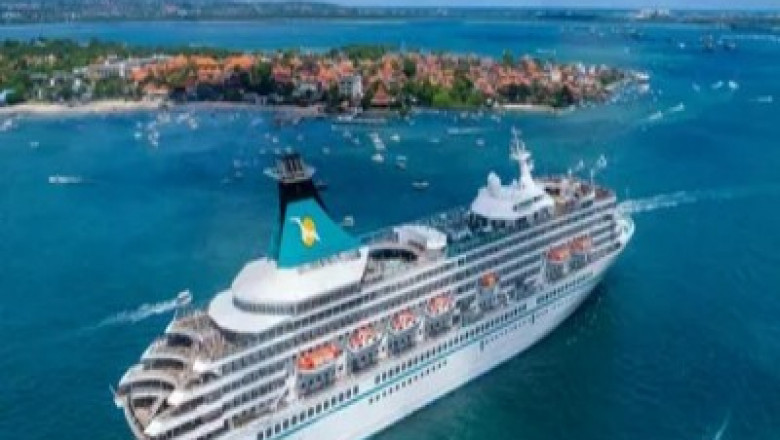views
Cruise tourism has seen significant growth over the past few decades and has become a multi-billion dollar industry worldwide. Cruise vacations provide travelers the opportunity to visit multiple destinations on a single trip while enjoying the amenities of an ocean-going vessel. Cruise lines offer a variety of ship sizes and itineraries to attract different types of travelers.
Growth of the Cruise Industry
The cruise industry has experienced steady growth since the 1990s according to the Cruise Lines International Association (CLIA). Some key milestones include:
- By 2000, the industry surpassed 10 million passengers globally in a year for the first time.
- Between 2000-2010, the industry grew at a rate of approximately 7% per year. The total number of passengers exceeded 22 million by 2010.
- Growth has slowed slightly but remains strong. In 2019, over 30 million passengers took a cruise globally, according to CLIA data. This represents a steady 5-6% average growth rate annually over the past decade.
- Cruise Tourism lines like Carnival Cruise Line, Royal Caribbean, and Norwegian Cruise Line have expanded their fleets significantly to meet rising demand. Over 100 new ships were added across all cruise lines between 2010-2020.
- Destinations in the Caribbean and Mediterranean remain the most popular but other areas like Alaska, Australia/New Zealand, and Asia have seen their shares increase. Expedition cruising to remote regions is another fast-growing segment.
Benefits for Destinations
Cruise tourism brings significant economic benefits to the destinations ships visit on their itineraries:
Passenger Spending - When ships are in port, passengers spend money on tours, excursions, transportation, shopping, meals at local restaurants and bars. This pump primes the local economy. Studies show on average each passenger spends around $100-150 per port visit.
Job Creation - Port facilities, tour operators, local businesses, and industries that support the cruise industry like transportation and food/beverage all see increases in hiring to meet the needs of ships in port. A study in Alaska estimated over 13,000 jobs were attributable to the cruise industry.
Infrastructure Investment - Destinations often partner with cruise lines to invest in projects like port terminals, shops/restaurants within ports, transportation links that share the benefits between public/private sectors. This upgrades facilities and tourism infrastructure overall.
Cross-Promoting Tourism - Increased awareness of destinations from cruise passengers promotes future visits. Many cruise passengers return to locations they enjoyed as independent leisure travelers. This provides an incentive for destinations to invest further in making a good impression.
Environmental and Community Impacts
While cruise tourism brings economic benefits, there are also environmental and community impacts that need addressing:
Environmental Impacts - The size of modern cruise ships means higher risks for pollution from sewage, graywater, solid waste disposal practices not always up to developed nation standards. Air emissions from engines are another concern though most utilize low-sulfur fuels.
Potential Over-Tourism - Popular destinations run the risk of being "loved to death" if limits are not placed on passenger and ship numbers. Too many ships in port spaces not designed for them causes congestion issues. Community disruption occurs if tourism overwhelms local infrastructure and culture.
Public Health Concerns - Outbreaks of illnesses like Norovirus are concerns aboard ships with thousands of passengers and crew in semi-enclosed environments. Proper medical/sanitation protocols are crucial to protect public health. Any outbreaks damage destinations' reputations if not contained properly.
Effects on authentic local culture - In some cases, destinations may lose aspects of authentic culture and atmosphere as spaces become dominated by tourism zones tailored for cruise passengers’ short visits. Community input helps address these impacts.
Overall, with thoughtful management frameworks that address environmental protections and give consideration to local communities, cruise tourism brings demonstrable economic benefits that can be sustained for destinations and their visitors for many years. An approach emphasizing stewardship, limits, and collaboration rather than prioritizing growth alone is needed to optimize outcomes.
About Author:
Money Singh is a seasoned content writer with over four years of experience in the market research sector. Her expertise spans various industries, including food and beverages, biotechnology, chemical and materials, defense and aerospace, consumer goods, etc. (https://www.linkedin.com/in/money-singh-590844163)






















Comments
0 comment